Woodland Trust competition to find England's top trees
- Published
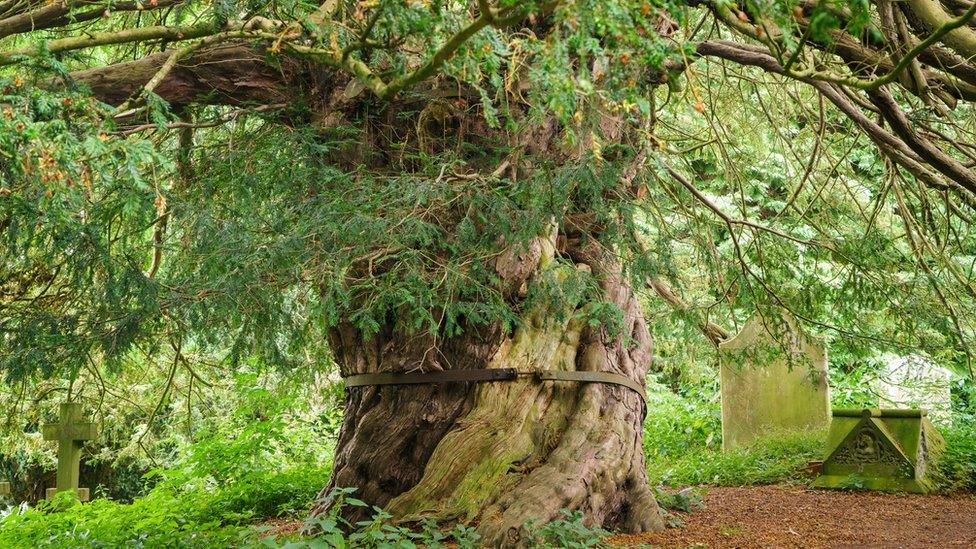
Beltingham Yew, Northumberland
A sycamore laced with shoes, an oak bound in chains and a 1,000-year-old yew are among the contenders for England's Tree of the Year 2020.
Ten trees have been shortlisted and members of the public are invited to vote for their favourite.
The Woodland Trust's annual competition is intended to promote interest in trees, their value and protecting them.
Chief executive Darren Moorcroft said the number of public nominations doubled this spring during lockdown.
"Lockdown had so many of us slowing down and taking more note of nature on our doorsteps, a boost for our mental health and wellbeing," he said.
"At a time when we're fighting both a climate and nature crisis, it is undeniable that trees are needed now more than ever."
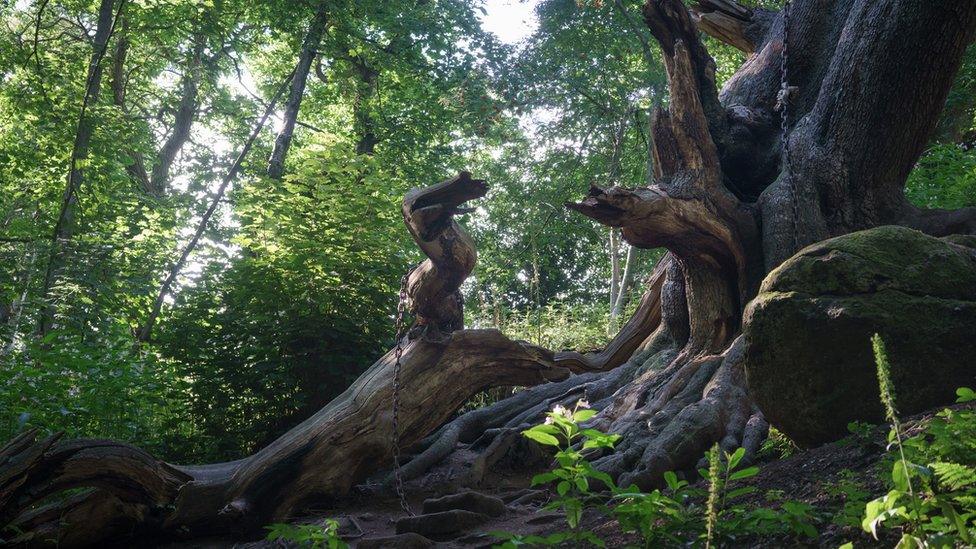
The Chained Oak, Alton, Staffordshire
The Chained Oak in Alton, Staffordshire, is shrouded in legend.
Tales tell that the Earl of Shrewsbury was cursed to lose a member of his family every time a branch of the tree broke.
So, after the first death, he had it bound in chains.
It was also the inspiration for the Hex ride at Alton Towers.

The Happy Man Tree, Hackney, London
A 150-year-old plane tree in Hackney, east London, called the Happy Man Tree has been adorned and celebrated by the community, after it was earmarked for felling to make way for housing.
Local parents and children say it is vital bit of green in the area and combats air pollution.
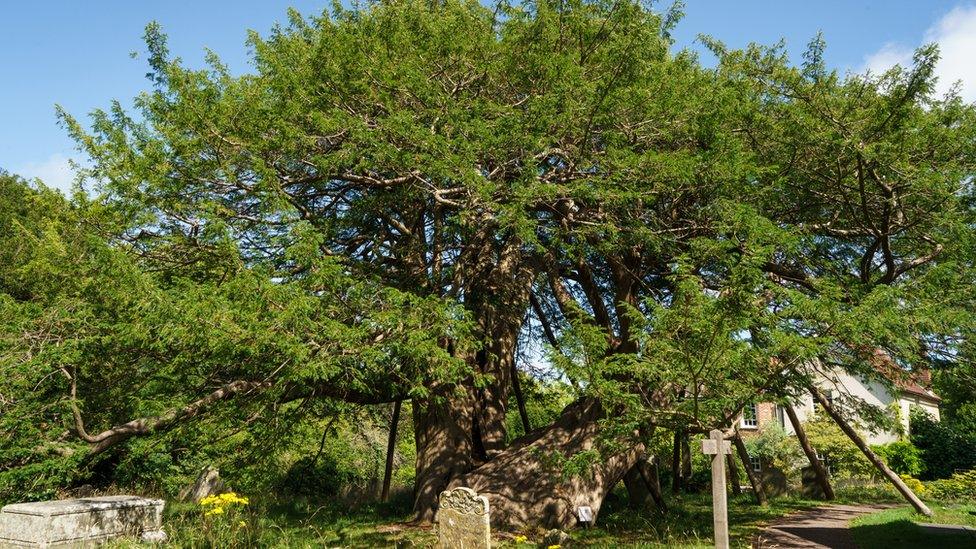
The Wilmington Yew, Wilmington, East Sussex
The Wilmington Yew in an East Sussex church yard has been growing among the graves for the more than 1,600 years.
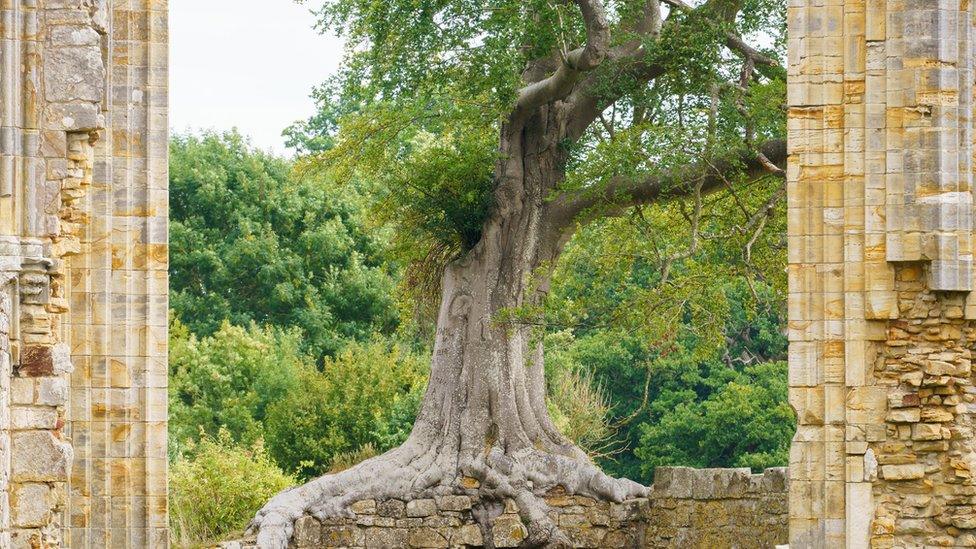
The Beech Tree in the Altar at Bayham Abbey, Kent
The Beech Tree in the Altar at Bayham Abbey, Kent, grows atop the remains of a wall, ruined after the dissolution of the monasteries by Henry VIII.
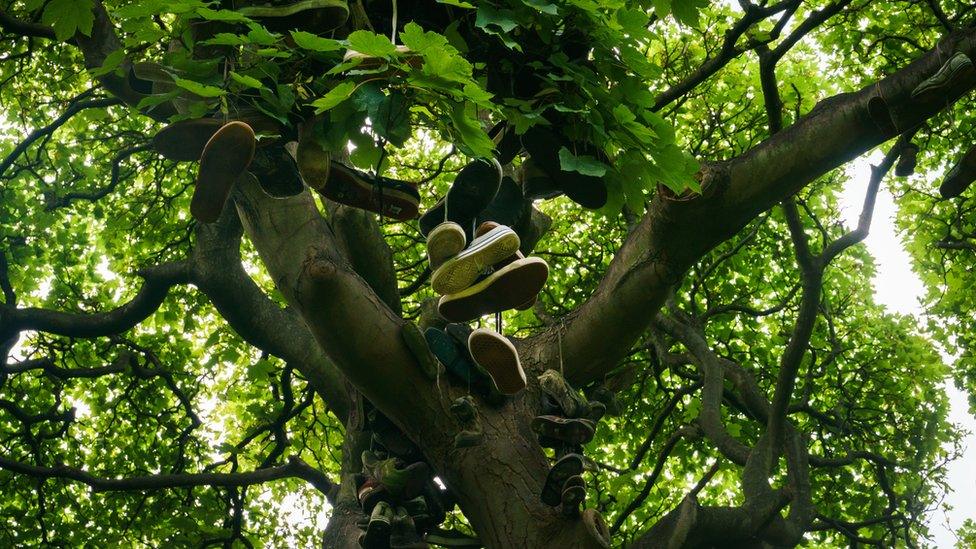
The Shoe Tree, Heaton Park, Newcastle
The Shoe Tree in Heaton Park, Newcastle, is a sycamore adorned with shoes thrown by students on completion of exams.
Periodically the council removes some of the shoes to keep the tree healthy.

Marylebone Elm, Westminster, London
The Marylebone Elm in Westminster escaped the Blitz unscathed, despite the church next door being destroyed by the bombs.
The Crouch Oak in Surrey was supposedly the marker point for the edge of Windsor Forest, when it covered a much larger area, and Queen Elizabeth I is said to have picnicked beneath its branches.
It was fenced off in the 19th Century after a young woman was caught stripping the bark to make love potions.
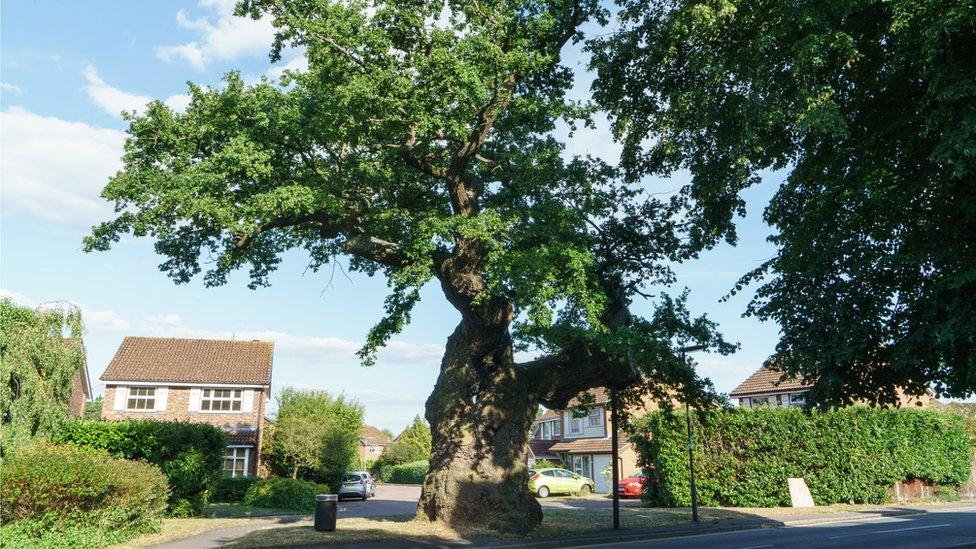
The Crouch Oak, Surrey
The Beltingham Yew in Northumberland is thought to be about 900 years old but local legend says St Cuthbert preached beneath its branches in the 7th Century.
Thick iron bands are now wrapped around the trunk to hold the tree together as it continues growing.
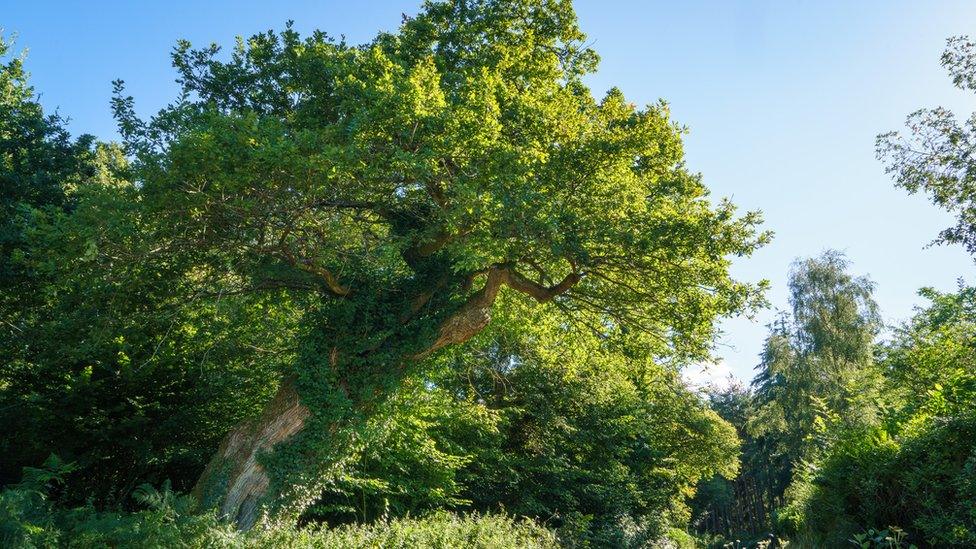
The Remedy Oak, Dorset
The Grantham Oak in Lincolnshire and The Remedy Oak in Dorset are also among the contenders for this year's title of Tree of the Year.
Voting is open on the Woodland Trust website until 24 September.
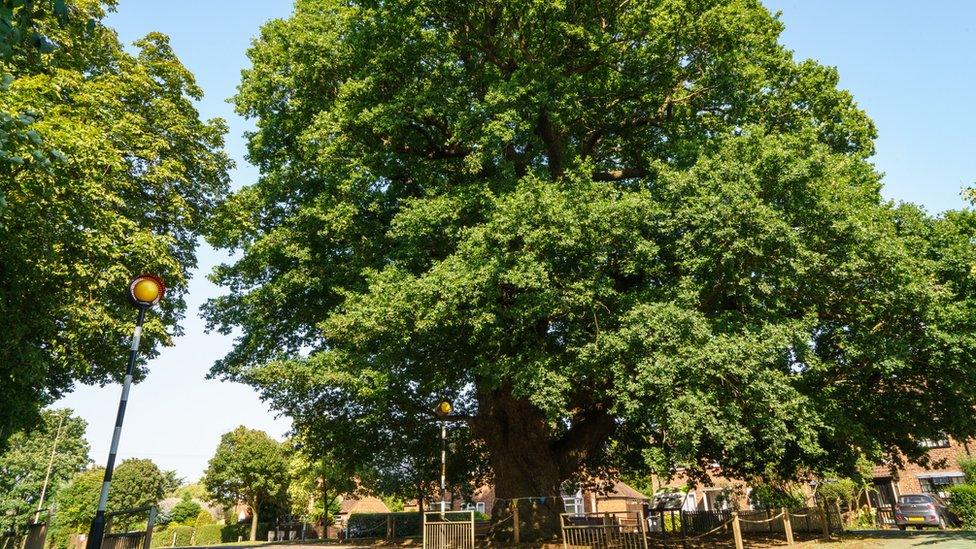
Grantham Oak, Grantham, Lincolnshire
.
- Published9 September 2019
